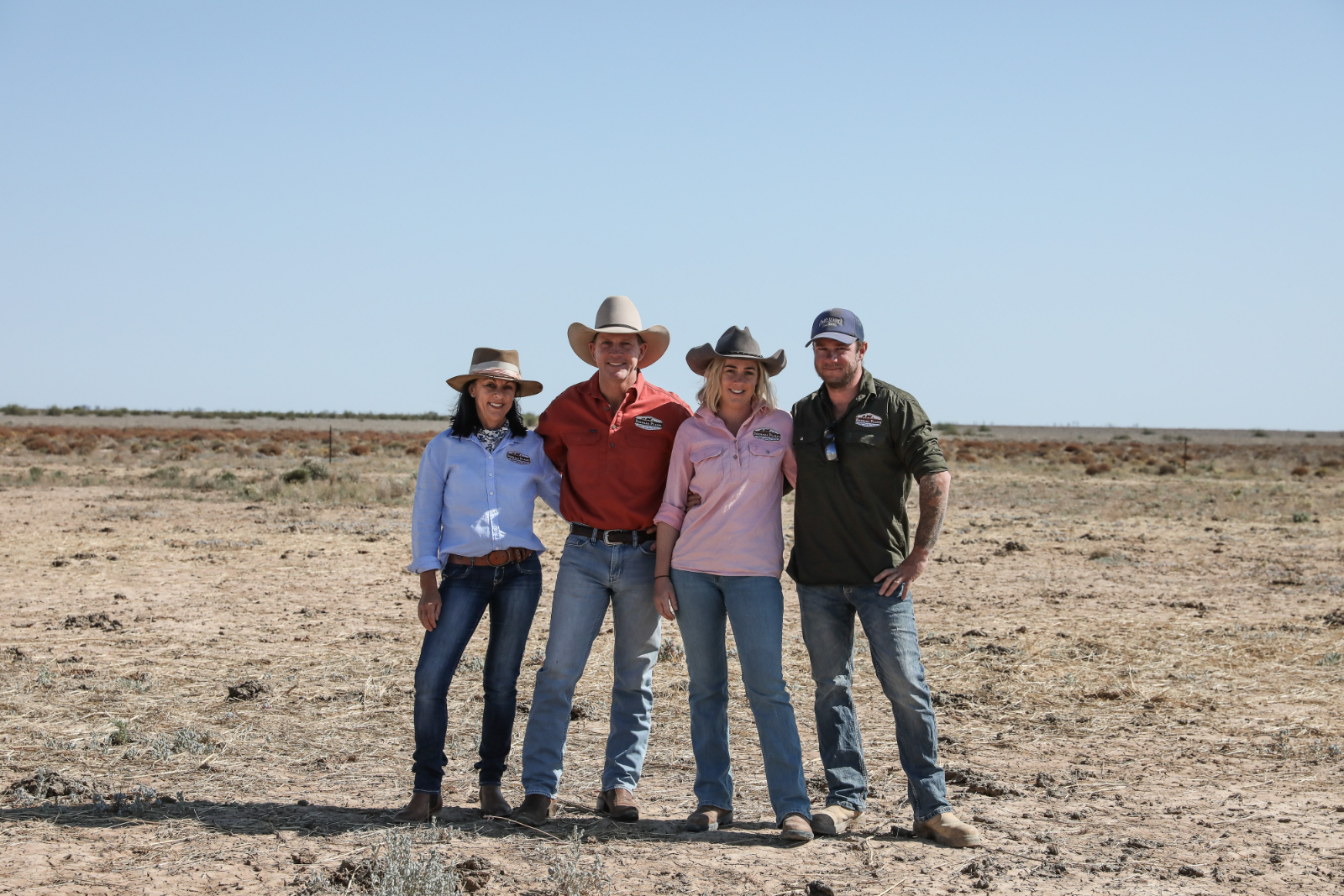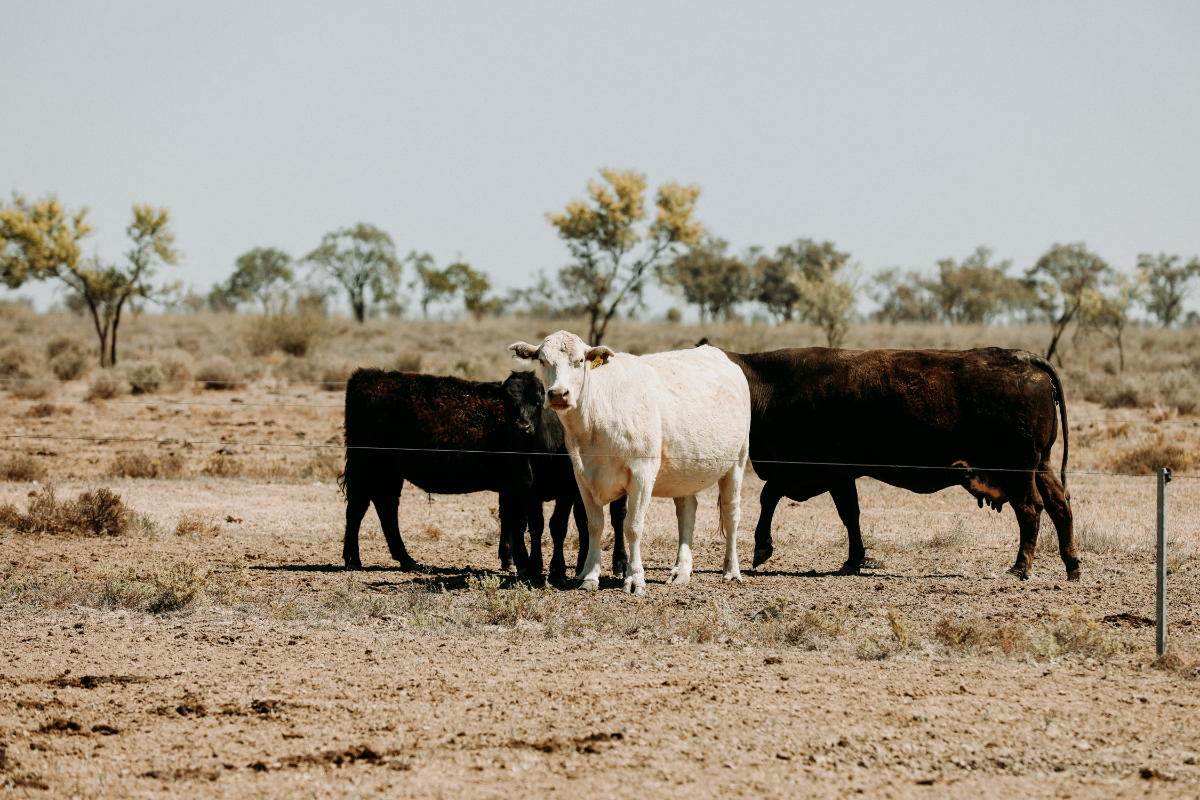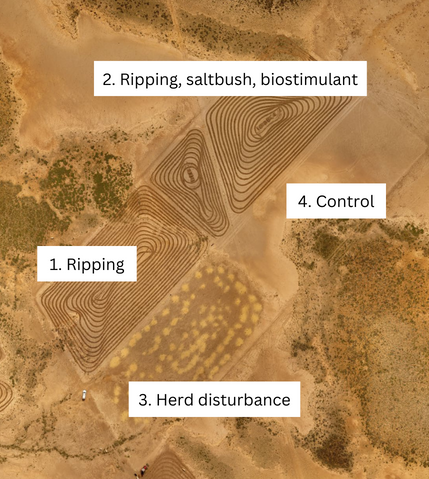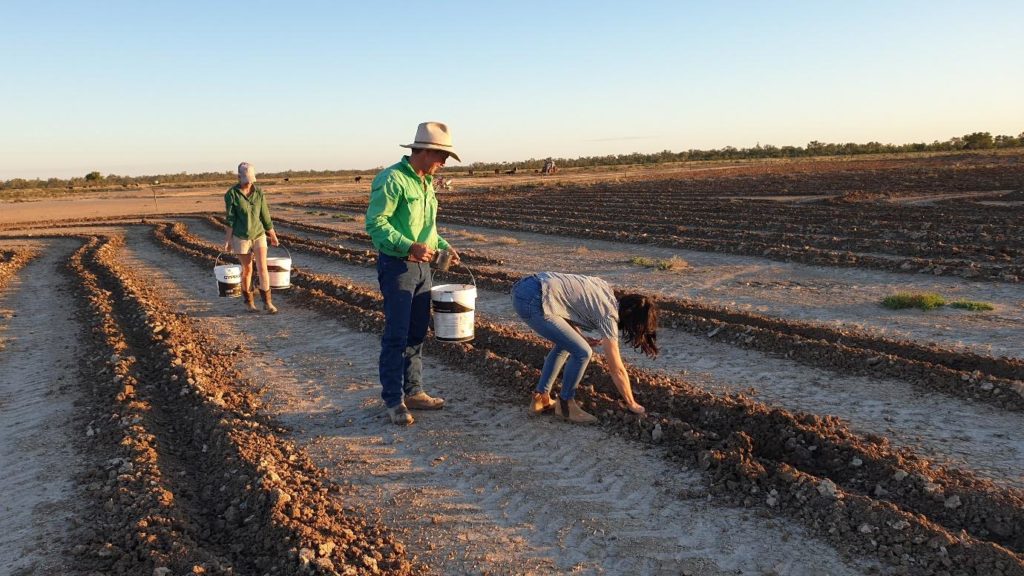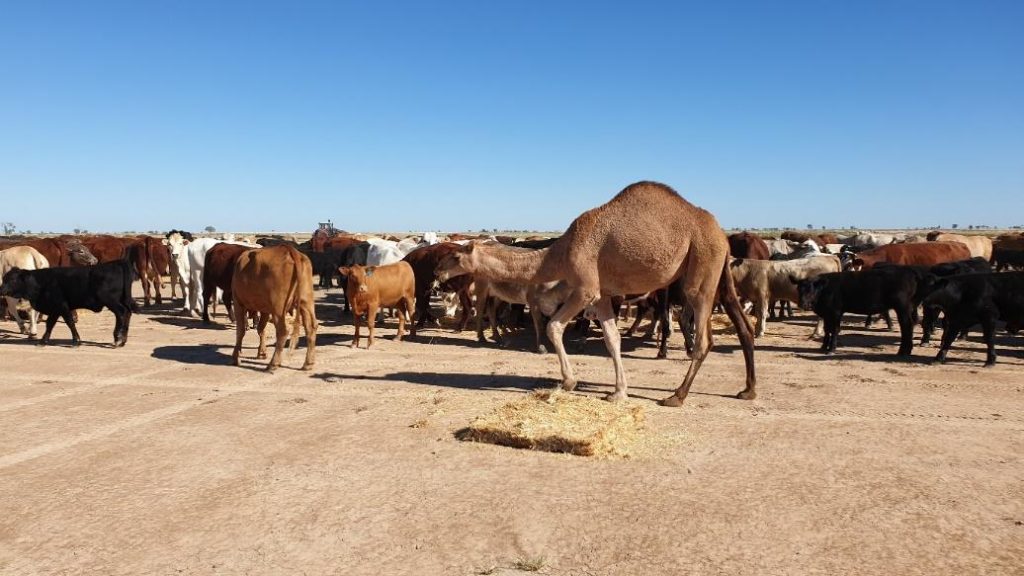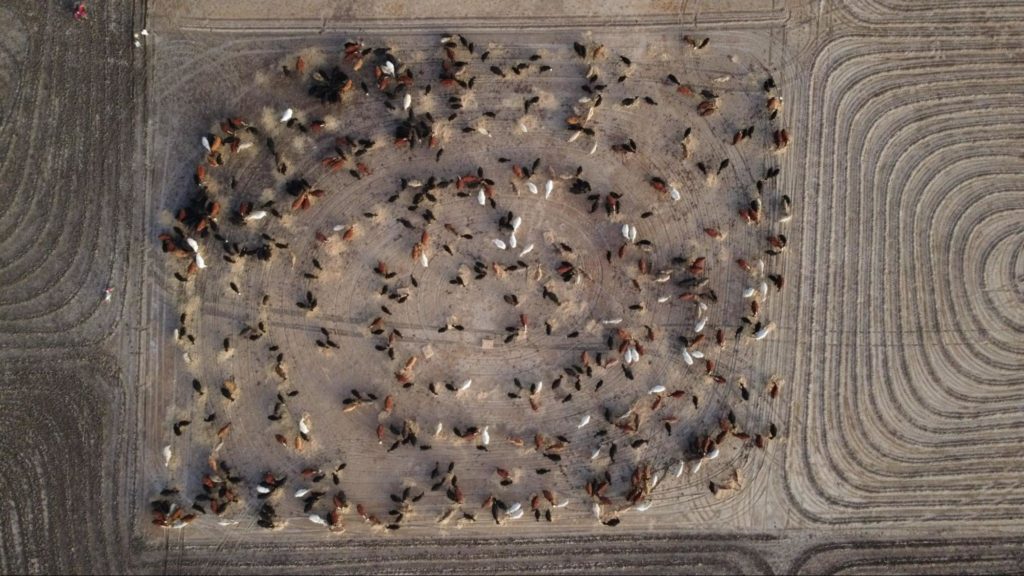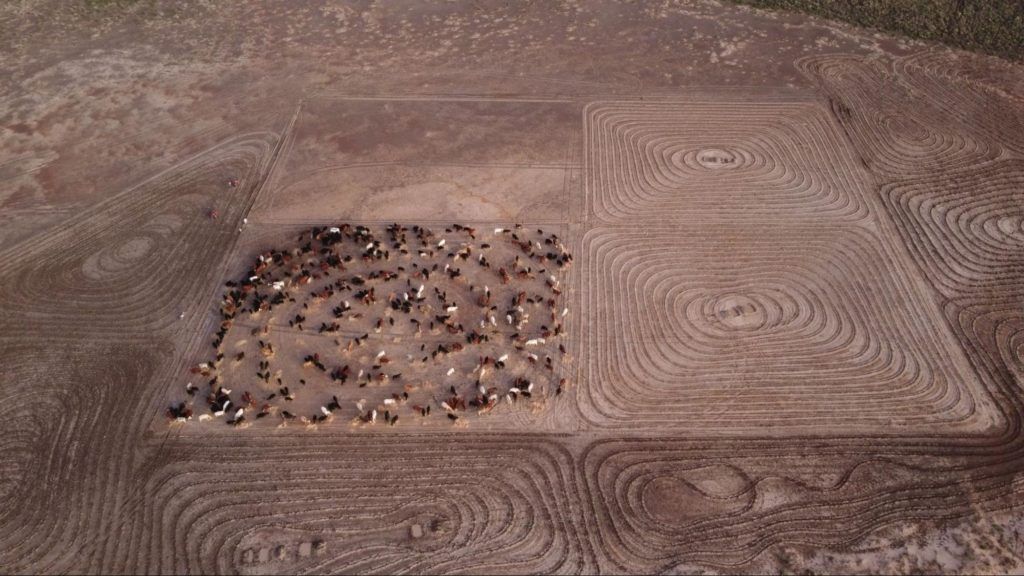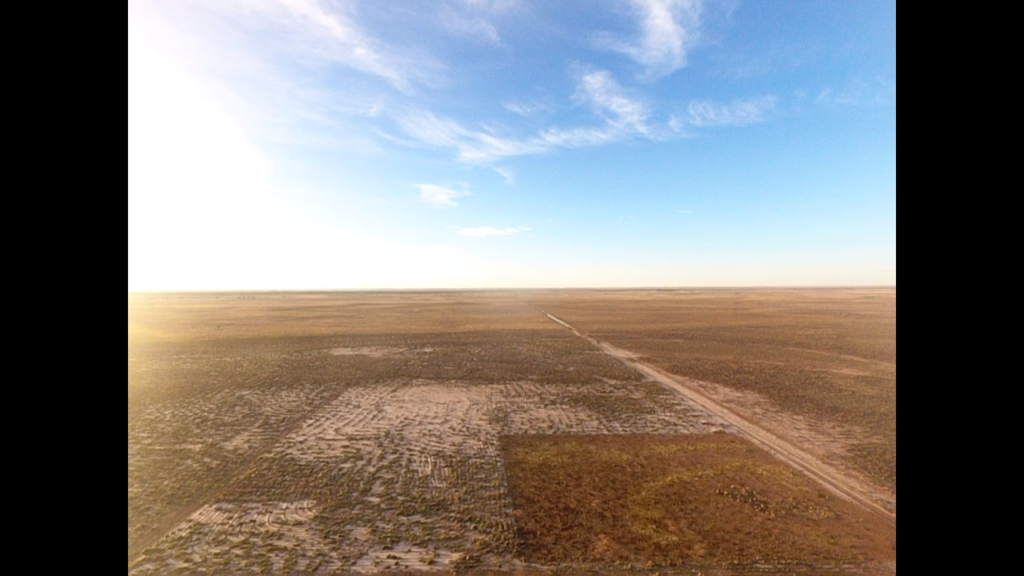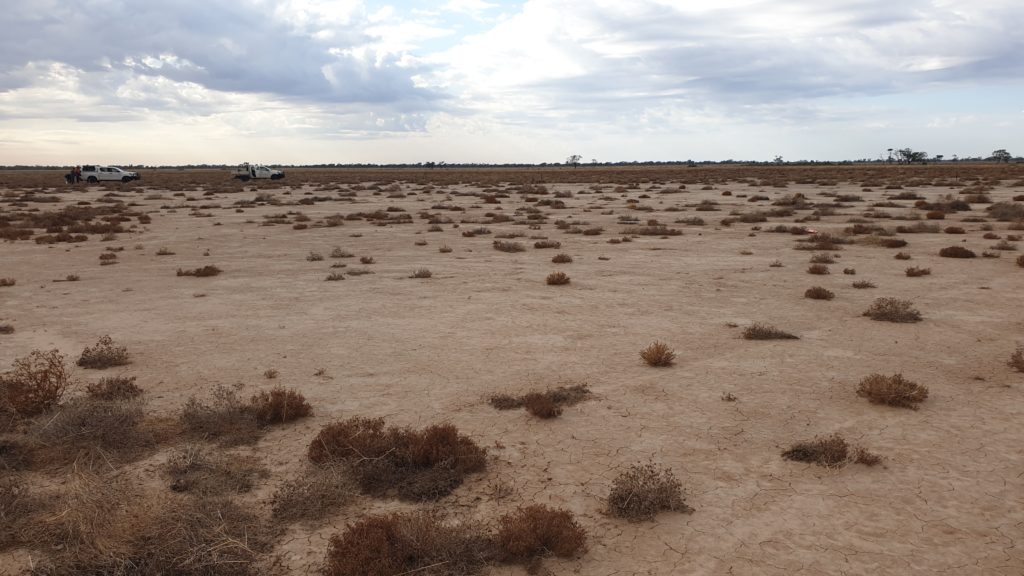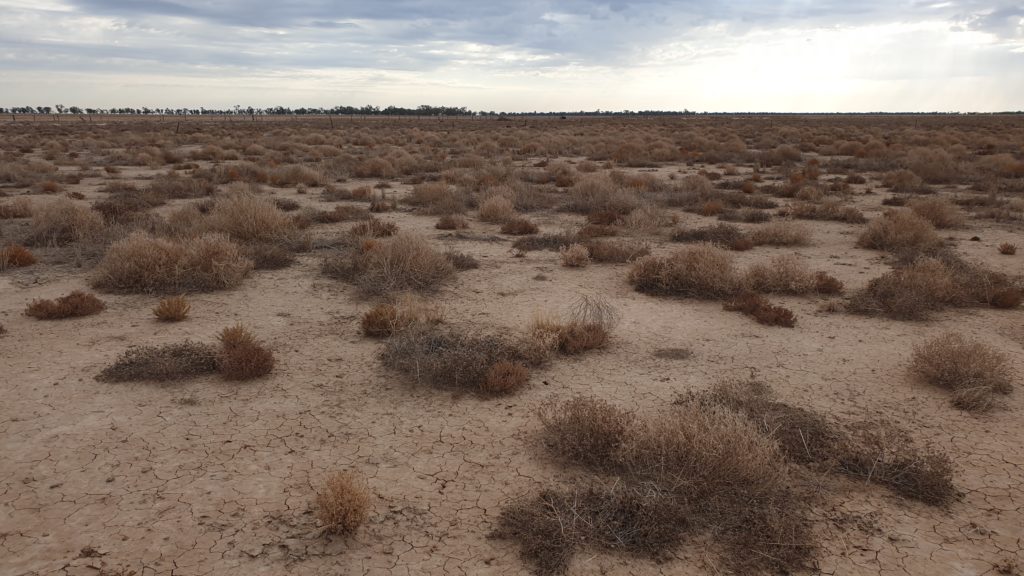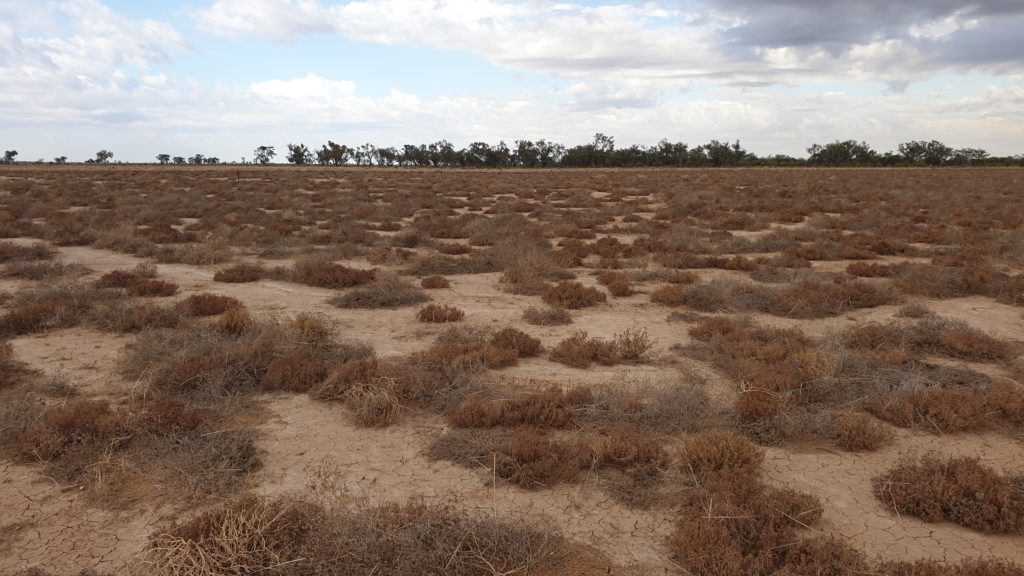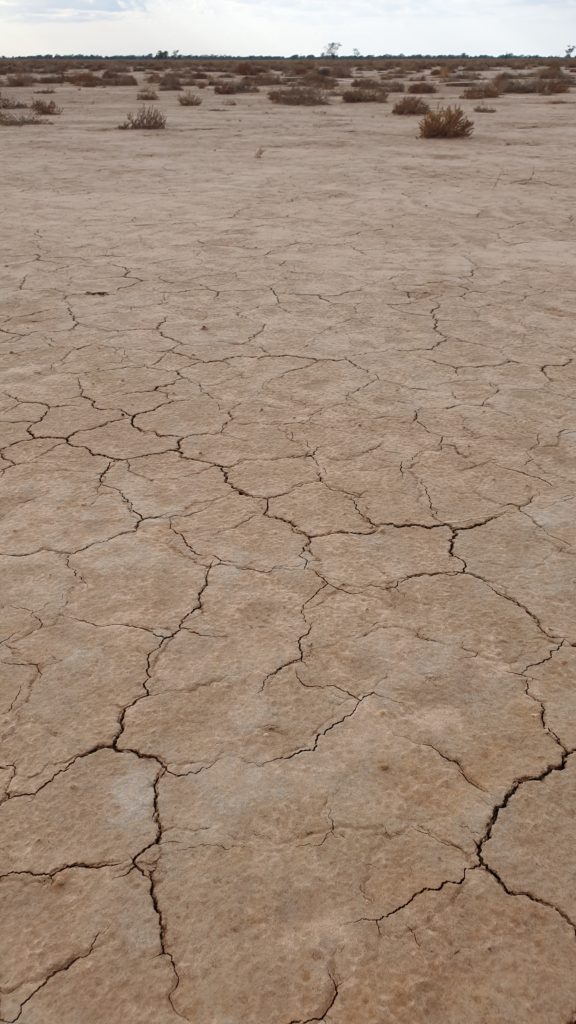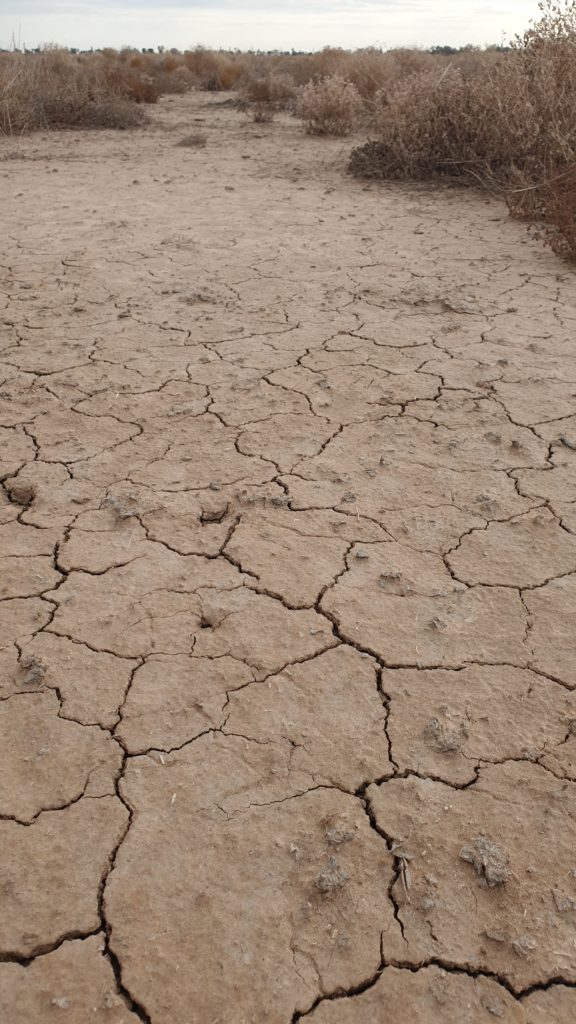The Finlaysons at Bokhara Plains
Resilience in the Rangelands | UPDATED November 2023
‘People would like to get more rain in this country, but what we need to do is have the ability to capture more of the rain. We can’t change how much we get, but we can change how effective it is.’ – Graham Finlayson
In 1999, when Graham and Cathy Finlayson acquired Bokhara Plains, they accepted the property was run down and degraded. Roughly 50% of the area was clay pan or bare ground, and they needed to often cut scrub as fodder to keep their sheep alive. They grew tired of feeling helpless in periods of drought, and after reading Allan Savory’s book on Holistic Management, they became determined to create a more productive, resilient landscape on their property.
Early on their journey to rehabilitate the landscape and improve production, the Finlaysons observed that new plant growth happened in disturbed areas of the clay pans. To facilitate this landscape response, they began by using machinery and eventually stock to break up the clay pans, allowing water to penetrate and seeds to germinate.
Reflecting on their 20 years in the Rangelands, Graham emphasises that enterprise resilience requires having the goal of ‘100% ground cover, 100% of the time’. Although difficult to ultimately achieve a goal like this, particularly in a landscape such as the rangelands with highly variable and relatively little rain, Graham reiterates the importance of at least being ‘rain-ready’. Rain-ready means having the plants, animals and soil health in place to help the landscape absorb, hold and efficiently use any rain when it comes. As Graham says, it’s not about how much it rains, but ‘how much rain goes into and stays in the soil.’
In the time they have owned their Brewarrina property, Graham and Cathy have experienced significant variations in twelve-month rolling rainfalls – ranging from 100 to 850mm. They use simple and reliable practices to be ‘rain-ready,’ such as intensive rotational grazing, matching stocking rate to carrying capacity, and mechanical interventions to rehabilitate clay pans. These practices harness the ability of plants and livestock to help rebuild soil health and animal productivity on the rangelands.
‘Early on, we had the Millennium drought, and we thought that was about as bad as it could get, but this most recent dry period from 2013-2020 was statistically and consistently worse, with a consecutive 96 months well below the average rolling twelve-month rainfall,’ Graham said.
The Finlaysons learned hard but valuable lessons during the Millennium drought, and planning for the inevitable dry spells is now part of their overall strategy. When droughts last beyond two to three years, their focus is to minimise damage so their country can respond when it does eventually rain. The Finlaysons attribute getting through the latest drought to two things; their rain-ready strategies for ecology, and business diversification.
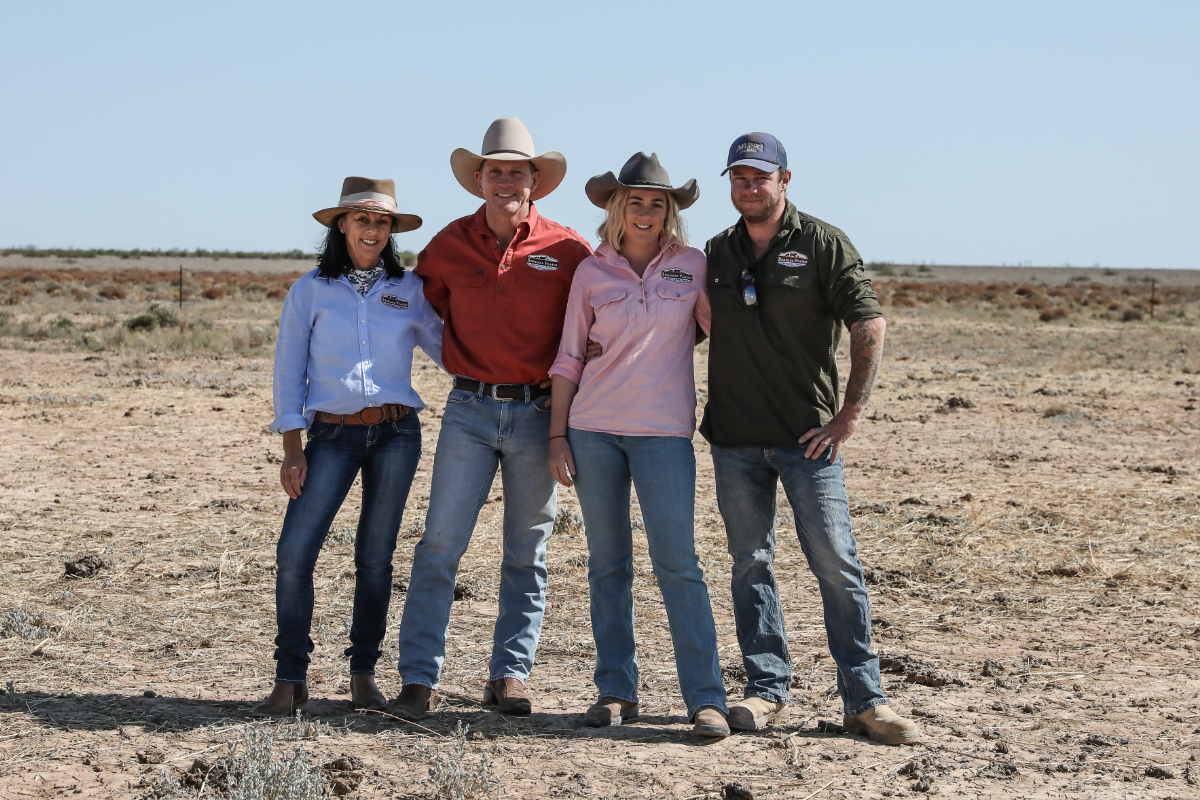
(L-R) Cathy, Graham and Harriet Finlayson with Chad Brash
Farm facts
Location
Ngemba, Ualarai, Murrawarri and Wailwan Country, Brewarrina, NSW
Climate
Hot dry summer, cold winter
Average Annual Rainfall
404 mm average*
Agro-ecological Region
Dry**
Property Size
9,300 ha
Elevation
115 m
*Sourced from MyClimateView.com.au. Farmer reported 385 mm.
**Extreme variability of rainfall is a defining feature of southern rangelands and has a significant impact on the challenges and solutions being explored at Bokhara Plains.
Social Structure
Family-owned and operated
Enterprise Type
Self-replacing cattle and sheep herds
Landscape
Rangelands
Soils*
Heavier deep cracking black soil floodplains through to lighter clay areas
*Learn more about soil classifications at Soil Science Australia
Practices for improving soil and landscape
Early days
When they bought Bokhara Plains, Graham and Cathy were daunted by the amount of hard bare ground, so set out to address degradation to develop healthier and more productive land. They drew on their knowledge from holistic management programs such as those delivered by Resource Consulting Services (RCS) to increase overall groundcover and create maximum diversity.
They initially used mechanical strategies by ripping lines to catch water and stimulate the seed bank, but in recognition of the beneficial role of livestock, they combined these two methods to drive their long-term progress forward despite tough seasons. They now manage cattle to provide strategic ‘disturbance and rest,’ in which animal biological processes can disturb and fertilise the soil and trigger plant growth to fill the moisture void in dry landscapes.
‘It’s not just the drought, but it’s the land’s capacity and ability to be able to respond after the drought,’ Graham said. ‘The best and most economical way to create positive change in these dry, brittle environments is to utilise biology, and the most consistent biology we have available is in the rumen of domesticated livestock.’
Rotational grazing with more paddocks
Graham shares that ‘The best investment to be made in any grazing business is ‘wire and water’ infrastructure, second only to investing in our own education.’ Over the past 20 years, the Finlaysons have built on Graham’s experiences as a Nuffield Scholar and with RCS’s Grazing for Profit course to refine their holistic management techniques. Evolving from a six-paddock extensive layout, they have developed about 170 paddocks in a traditional cell grazing wagon wheel design (Image 5 and 6), with the watering points in the centre. Paddock size ranges from 20–400ha and averages 50–60ha.
Having more paddocks allows their management to be more intensive. After finding the landscape improved after running some agistment cattle on Bokhara Plains, they realised the beneficial role of cattle in the environment. They began to incorporate cattle, and later camels, into their enterprise mix.
Graham and Cathy now move 700 cattle regularly with grazes that can be from half a day to a few days in length, in accordance with their twelve month grazing plan across the property. With such regular movement, ease of handling is critical and they use low-stress stock handling, select sires with calm temperaments and cull any animals that do not match their goals for grass efficiency and good handling. An added benefit of the resulting calm herd is that paddocks can be fenced using a single electric wire.
‘[Cattle are] a giant biological vat that breaks down dry cellulose and turns it into high-quality protein and the best fertiliser known to man and puts it back out on the paddock. The plants love it. The biodiversity loves it, the wildlife loves it. It’s incredible how many things turn up in paddocks where the cattle are. Life just creates more life.’ – Graham Finlayson
How they measure
The Finlaysons measure dry sheep equivalent (DSE) days or livestock unit days (LSU) monthly. As the landscape is a fixed measure in this equation, these indicators identify if cattle numbers are increasing or rainfall is decreasing. Whilst they can’t change the rainfall, they can make decisions about livestock numbers and available feed in order to match stocking rate to carrying capacity. As a result of monitoring in this way, they have entirely de-stocked half a dozen times between 2001 and 2019. This responsiveness is critical in their system, with the long-term goal of improving the land condition enough to reduce this necessity.
Graham believes ‘well-managed livestock’ are the key to reversing many environmental problems, particularly in the rangelands, and says that a flexible approach is essential to managing complex grazing systems.
Using cattle and pasture rest (intensive planned rotational grazing) primarily, they have increased carrying capacity per hectare from under 8 LSU days per hectare per 100 mm of rainfall to 9.4 LSU/Ha/100mm, with a lot more consistency in feed availability. In combination with the intensive rotational grazing system, they have utilised mechanical interventions such as ripping and ponding to convert over 700 hectares of claypans to productive, pastured rangelands (see Image 7). While these carrying capacity benchmarks are used by Graham and Cathy to monitor the long term productivity of their land and match stocking rate to carrying capacity, they are quick to note that it is critical to assess and react to on-ground assessments of landscape condition and pasture availability.
Sharing what works for them
The Finlaysons have decided to participate in the Rangelands Living Skin project to generate data for the rangelands context, and to encourage ‘more science and farmer collaboration.’ They can see that the practices they have used over the past 20 years have achieved beneficial outcomes, but they want to be able to demonstrate the ‘why and how’ with scientific data.
In addition, Graham sees potential in the carbon and biodiversity markets. He says undertaking a carbon project requires a more intensive management approach and that these projects ‘can bring people back into the landscape’ if designed well. The Rangelands Living Skin project provides an opportunity for producers to investigate these options through the assessment of soil carbon and on-farm biodiversity.
The peer group interaction that is central to the project is something Graham values. He said: ‘There’s so much to gain and nothing to lose. We’re not competing with each other, you know. As successful as my neighbour can be, it’s not going to take anything away from us also being successful.’
Rangelands Living Skin trial practices
As part of the Rangelands Living Skin project, producers are running low-cost trials of various, scalable practices that they hope will offer multiple benefits. The trials include a trial chosen by the farmer (demonstration site), as well as replicated trials across the farms, and remote sensing data to reflect grazing management.
Farmer-Led Demonstration Site: Mechanical Intervention and Biostimulants
The Finlaysons used additional practical and inexpensive methods to rehabilitate clay pans and clay (not salty) scalds. Together with the project partners, the Finlaysons designed an experiment for testing three practices, and created one plot for each practice, keeping one as a ‘control’ in which no actions were undertaken.
The three practices can be summarised as 1) ripping, 2) ripping, planting saltbush seed and applying biological stimulants, and 3) applying hay and creating herd disturbance. The trial plots of (1) and (2) test whether mechanical disturbance of the clay pan, with and without the addition of saltbush seed and biostimulants, will increase water absorption and allow plants to establish and increase ground cover on scalded areas.
‘What we are really lacking is a seed bed. There’s a seed bank, but there’s not a seed bed. There’s not an ability for the ground to absorb moisture and hang onto it enough and for that hard capping of the surface to be broken up so that plants can actually grow.’ Graham
Plot (3) tests the impact of intense herd disturbance on the claypan. To prepare the third plot, hay bales were spread throughout the area to introduce organic matter, increase excitement among the entering herd and ensure the herd dispersed across the plot. A herd of around 600 450kg cattle (and two camels) disturbed the claypan overnight with as much continuous herd movement encouraged during this time as possible. Reflecting on the trial, Graham said, ‘We had a really good mulching impact, a lot of dung deposited, and then we were lucky to get 60 mm of rain. I’ve been toying with doing this for over 20 years on this claypan.’ His reflection reinforces the challenge of running these trials, as the weather can have a strong influence on the outcome. Graham plans to run the herd through the areas again to create more disturbance.
Replicated Plot Trials
Replicated plot trails of biostimulants are being undertaken across the four participating Rangelands Living Skin farms. The replicated plot trials provide an opportunity to investigate the soil and plant benefits of various treatments on a small scale in a scientifically rigorous manner.
The treatments to be applied were selected in collaboration with the core producers, and in this case includes biological inputs (bioprimers). Each replicate has been randomised to address any potential bias that may present in the results due to variations in the soil or alike.
The treatments at Bokhara Plains included:
- Control – no application of treatments or sowing of new species. This is the reference site to which the other treatments are compared with.
- Bioprimer (Solid) – application of a solid biological stimulant material to existing vegetation/soil. The solid bioprimer was applied by hand at a rate of 250kg/ha.
- Bioprimer (Liquid Foliar) – application of a liquid biological stimulant material to existing vegetation. The liquid biofoliar spray was applied using a 15L knapsack sprayer at a rate of 5L/ha.
At each site, three replicates of each treatment were established in late July 2022 in a randomised, blocked design (Image 14).

Image 14. Trial design for Bokhara Plains (Source: DPI, 2022).
Remote Sensing of Grazing Management
Changes in ground cover in response to the improved grazing management (managing stocking rates and resting paddocks) on Bokhara Plains over the last 24 years are being assessed using remote sensing data. Using Landsat spatial data, the total ground cover on Bokhara Plains is compared with similar land types within 10km of the property (benchmark areas), for each season since 1989. This method allows the impact of management to be separated from some of the temporal and spatial variability associated with seasonal conditions and different land types. A positive trend in this difference in cover between Bokhara Plains and the benchmark area from the time of changed grazing management would indicate positive impacts of this change.
Early observations
The impact of the practices on soil, pasture and biodiversity are being monitored by monitoring surface soil condition, soil carbon, soil biology, ground cover and pasture composition. So far, in observing the four clay pan rehabilitation trial plots, the Finlaysons have noticed that after rain, the water was absorbed much faster in the plot of herd disturbance rather than in the plots with mechanical ripping, where the water was pooling.
Graham shares that ‘We’ve found when we create disturbance, we get growth, and sometimes it’s very early succession plants, which is quite often what people would call weeds or less palatable or less desirable species, but they’re the plants that do a good job for us.’ Early succession plants can also help to establish roots in the soil and create an environment where more desirable species can become established.
In April 2023, the project team reported ‘a noticeable visual difference between the three plots at each replicate.’ Data entry and analysis are still occurring, however, Images 15 – 18 compare photo points showing changes over twelve months since animal impact occurred.
The project team is often in the field collecting data, and we’ll be adding more information about the trial results in 2024. Sign up to our Newsletter to receive updates.
Acknowledgements
This case study was prepared as part of the Rangelands Living Skin Project. The Rangelands Living Skin is a four-year project in the NSW Rangelands co-designed by farming families, scientists and collaborators to evaluate cost-effective practices – chosen by producers – for fostering a productive rangeland system now and into the future.
In this project, four core producers trialled a range of practices to improve landscape health, livestock production and business performance to ultimately achieve greater resilience from year to year. The project will create an evidence base to inform the widespread adoption of practices that benefit soil, plants, animals and people – the living skin of the rangelands.
Led by the NSW Department of Primary Industries and funded by Meat & Livestock Australia, this project is a significant investment in the southern rangelands. The Rangelands Living Skin project is a truly collaborative project involving producers, industry, government, academia, researchers, educators and extension specialists, and carbon aggregators.
Soils for Life gratefully acknowledges the generous contributions of the partner organisations in this project. We also acknowledge that the contents of this case study do not necessarily reflect the views of these contributors.

For more information
Follow us for the latest
If you have any questions, get in touch at [email protected].



